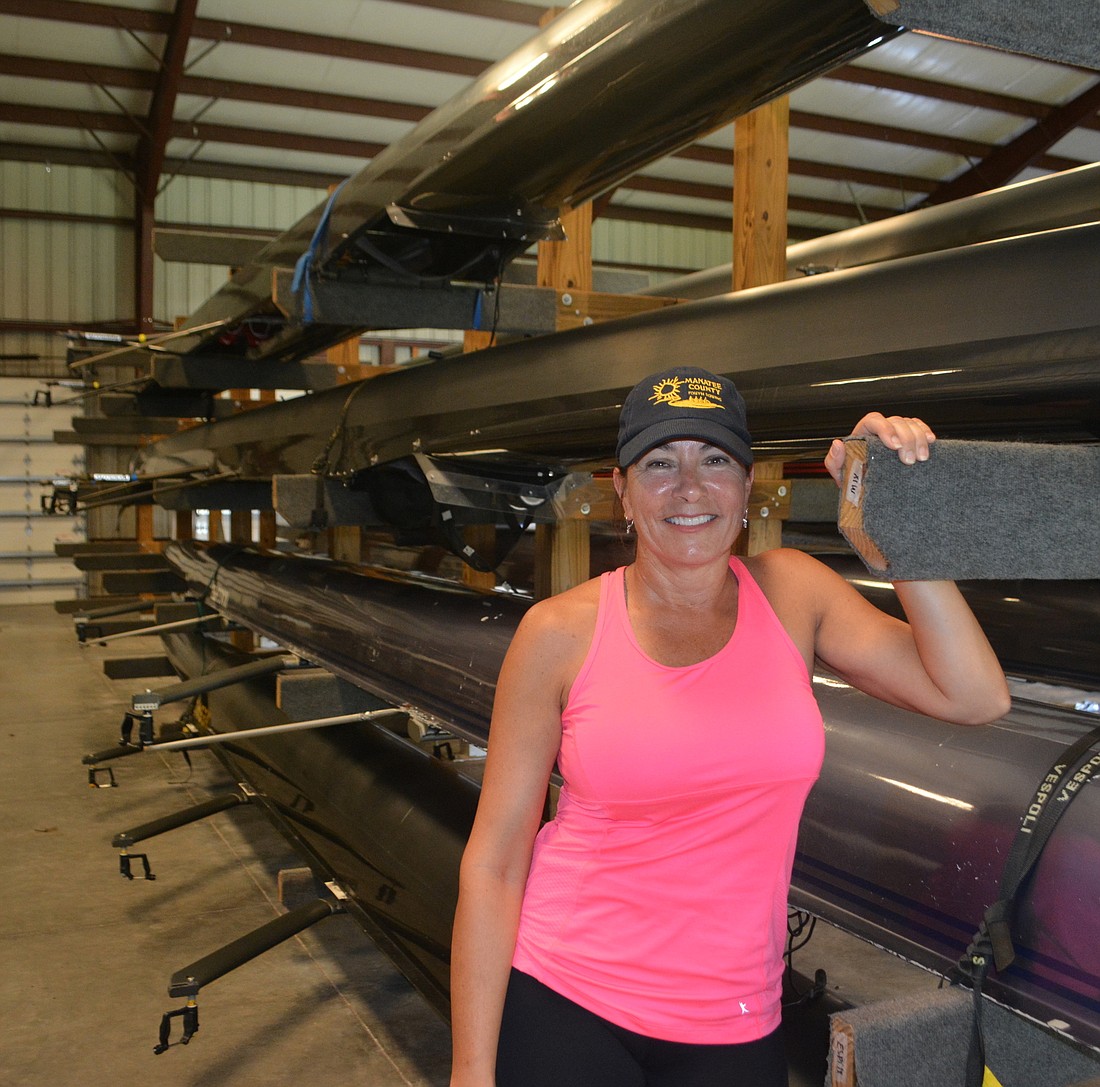- April 18, 2024
-
-
Loading

Loading

After 20 years as a rowing coach in Sarasota and Manatee counties, Trish Chastain knows they won’t be serving crab at the 2017 World Rowing Championships at Nathan Benderson Park.
No, not the food.
A rower “catches a crab” when his or her oar gets stuck in the water (doesn’t exit the water cleanly) at the finish of a stroke.
Dealing with many beginner rowers over the years, Chastain has seen rowers “catch a crab” and be lifted right out of the boat.
“You are driving so hard and your grip is so tense, you’re holding on and next thing you know you are out of the boat,” said Chastain, a co-owner of Powerhouse Row & Fitness in Lakewood Ranch. “But I’ve never been to an elite event and seen an ejector crab.”
A lesser result of “catching a crab” would be to take a rower out of rhythm with his or her teammates.
Those who go to the 2017 World Rowing Championships and are rookies to the sport, might hear different rowing terms and wonder what they mean. Chastain, who coaches the Manatee County Youth Rowing team was willing to describe some of the terms for the novice fan. She also suggests watching from near the start or finish of the race for best viewing. The rowers go all out at the start before settling into a rhythm and the finish offers "pure, gut-wrenching desire."
Terms:
BOW — “It’s what goes over the finish line first.”
BOW BALL — “Each boat has a bow ball that is checked by officials before the race. They are for protection (if the boats get out of line and hit each other, the bows are very pointed and could do damage).”
CATCH — “When the blade is put into the water.”
DECK — “There are decks on both the bow and stern. It is the covered part of the boat.”
DRIVE — “The drive speed (where the oars are in the water) is twice as fast as the recovery. It’s quick-slow, quick-slow.”
FEATHERING — “When the blade is released from the water, you are supposed to take it back flat and parallel to the water. When you don’t, that’s feathering.”
PUDDLES — “As coaches, we love puddles. It’s an indicator of pressure and power behind a stroke. It’s a swirl in the water when your oar leaves the water. If your blade creates no swirl, that’s bad.”
RECOVERY — “It where the rower comes up the slide (after finishing a stroke). It’s controlled and relaxed.”
RELEASE — “Pushing down on the handle of the oar to raise it out of the water. It starts your recovery.”
RUN — “It’s the distance the boat moves while the rower is on the recovery. When it’s good, it looks like the boat literally is gliding on top of the water, underneath the rowers. Things are nice and smooth. It the boat looks very jerky, the rowers are not allowing the boat to do its job.”
RIGGER — The blades go through the rigging. Blades could pop out if they are not tightened enough.”
RUSHING THE SLIDE — “It’s not being patient, being anxious. It happens when you want to go through things faster (than the proper rhythm). If you see this, it’s because the rower has panicked, and it is just a mess. You probably won’t see it on the elite level because these people have been (rowing) most of their high school and college lives.”
SKYING — “You aren’t likely to see this at the elite level. It’s when during recovery the rowers drop their hands and the blades come way up. Skying is when you are trying to knock a bird out of the sky. The blades should be just above the water’s surface. If you want to see how it should be done, watch the U.S. Women’s Eight. That’s going to be beautiful. “
STERN — “The back.”
STROKE — “The rower who sits closest to the stern. I look for an athlete to be an aggressive athlete who is in control. They don’t know how to quit and they are stubborn. The stroke is the leader of the boat and sets the tone.”
WASHING OUT — “It’s when a rower releases the blade from the water before being done with the stroke. You lose a lot of power. It’s like you are bringing up water for your friends.”
WHEELS — “Every seat sits on wheels, which are on ball bearings which ride on tracks. You need to keep your wheels clean because they do wear down.”